|
|
|
|
Shoshoni raids under Chief Bear Hunter during the winter of 1862-63 provoked Federal retaliation. Troops under Col. Patrick E. Connor set out from Ft. Douglas, Utah, in the deep snow of January 1863 towards Chief Bear Hunter's camp, 120 miles north near present-day Preston, Idaho. The Native American camp included about 300 Shoshoni warriors defensively placed in the Battle Creek ravine west of Bear River with high embankments in which the Indians had cut access trails. Shortly after dawn on January 29, Connor's troops appeared across the river and began crossing. Before all of the men had crossed and Connor had arrived, some troops made an unsuccessful frontal attack which the Indians easily repulsed inflicting numerous casualties. When Connor took over, he sent troops to where the ravine debouched through the bluffs. Some of these men covered the mouth of the ravine to prevent any escape while others moved down the rims, firing on the Indians below. This fire killed many of the warriors, but some attempted to escape by swimming the icy river where other troops shot them. The battle stopped by mid-morning. The troopers had killed most of the warriors plus a number of women, children and old men—and captured many of the women and children. Result(s): Union victory (massacre) Location: Franklin County Campaign: Expedition from Camp Douglas, Utah Territory, to Cache Valley, Idaho Territory (1863) Date(s): January 29, 1863 Principal Commanders: Col. Patrick Edward Connor [US]; Chief Bear Hunter [I] Forces Engaged: District of Utah [US]; Shoshoni Indians [I] Estimated Casualties: 451 total (US 67; I 384) |
Kindle Available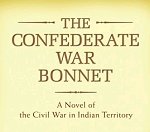 The Confederate War Bonnet: A Novel of the Civil War in Indian Territory An evocative historical novel that helps to answer how Indians became involved in the Civil War, why they joined Confederate forces, and how the experience shaped their future in America. |
Kindle Available Civil War on the Western Border, 1854-1865 Fanatical politics of the western frontier, immigrant abolitionists with loaded Spencer rifles funded by mysterious personages back East, cut-throats, gin heads and horse thieves, colorful character descriptions |
 The Civil War in Arizona: The Story of the California Volunteers, 1861-1865 History of the California Column in wartime Arizona and a rare compilation of letters written by the volunteer soldiers who served in the U.S. Army from 1861 to 1866. These letters provide testimony of the grueling desert conditions the soldiers endured as they fought on many fronts |
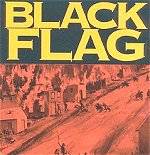 Black Flag: Guerrilla Warfare on the Western Border, 1861-1865: A Riveting Account of a Bloody Chapter in Civil War History The guerilla warfare along the Kansas-Missouri boarder brought forth some of the bloodiest incidents of the Civil War |
Kindle Available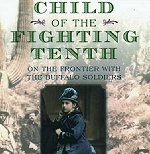 Child of the Fighting Tenth: On the Frontier with the Buffalo Soldiers The drama of growing up in the frontier army, the Indian wars on the plains, the Geronimo campaign in the Southwest and Mexico, her love for the regiment and the Buffalo Soldiers, their admiration for her, and even her lost love for a dashing young cavalry officer |
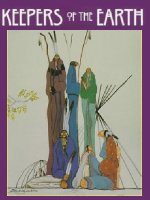 Keepers of the Earth: Native American Stories and Environmental Activities for Children These are stories from the various First Nations. They are well told. Get this for your kids. In an age of instant media, the storyteller's art is one that is timeless, connecting us to our oral past. Make sure that it connects to our future, too. |
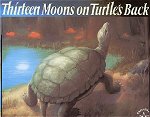 Thirteen Moons on Turtle's Back The Turtle's shell stand for the 13 cycles of the moon, each with its own name and a story that relates to the changing seasons. Joseph Bruchac and Jonathan London collaborate to reveal the beauty of the natural world around us, while Thomas Locker's illustrations honor both Native American legends and the varied American landscape |
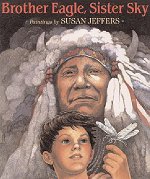 Brother Eagle Sister Sky The Earth does not belong to us. We belong to the Earth. The great American Indian Chief Seattle spoke these words over a hundred years ago. His remarkably relevant message of respect for the Earth and every creature on it has endured the test of time and is imbued with passion born of love of the land and the environment |
 The Talking Earth Billie Wind lives with her Seminole tribe. She follows their customs, but the dangers of pollution and nuclear war she's learned about in school seem much more real to her. How can she believe the Seminole legends about talking animals and earth spirits? |
 The Indians and the Civil War - Effects of the American Civil War on the Native American History Native American history has always been a study full of ambiguous points. Nowadays, when the outlived tribes still live on poor circumstances and try to keep step with our running world despairingly, their unique culture deserves more attention than used to. |
Kindle Available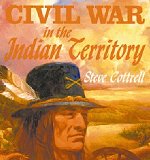 Civil War in the Indian Territory When the war broke out, both sides wanted the Five Civilized Tribes, led by the Cherokees, and each got around half. The Confederacy sent Brigadier General Albert Pike to recruit them, and he did a pretty good job. A strange, brilliant, man, Pike's career as a General is a minor footnote in his long life |
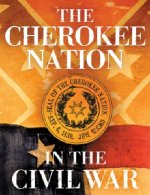 The Cherokee Nation in the Civil War The Cherokee people, who had only just begun to recover from the ordeal of removal, faced an equally devastating upheaval in the Civil War. The Cherokee Nation, with its sovereign status and distinct culture, had a wartime experience unlike that of any other group of people |
 The First Americans: Prehistory-1600 A History of US Tribes of hunters made their way from Asia across the Bering land bridge to North America. They didn't know it, but they had discovered a New World. The First Americans is a fascinating re-creation of pre-Columbian Native American life, and it's an adventure of a lifetime |